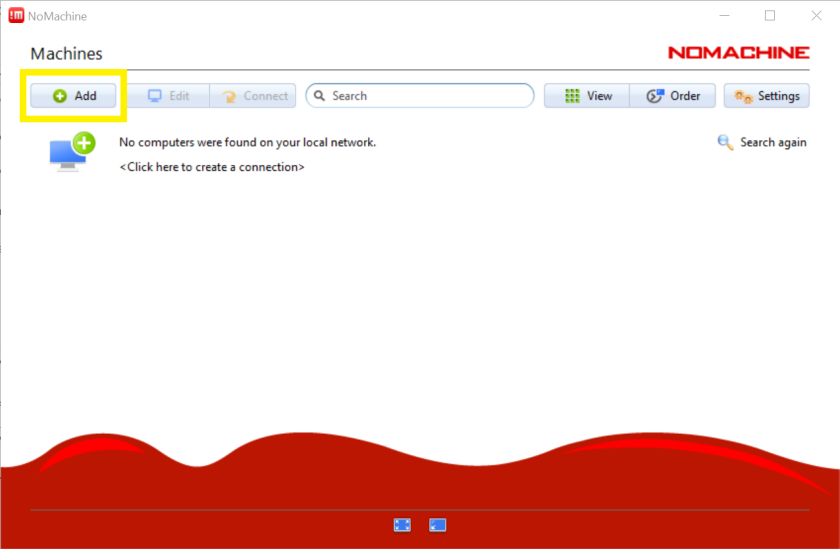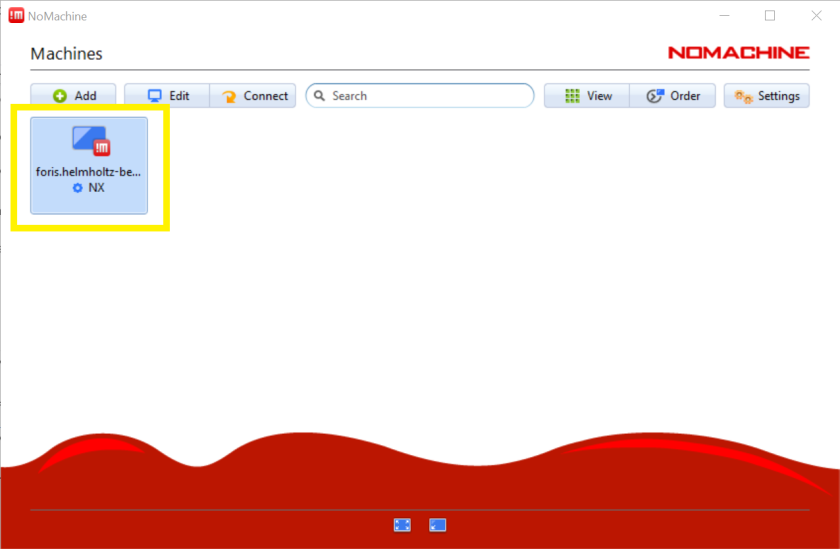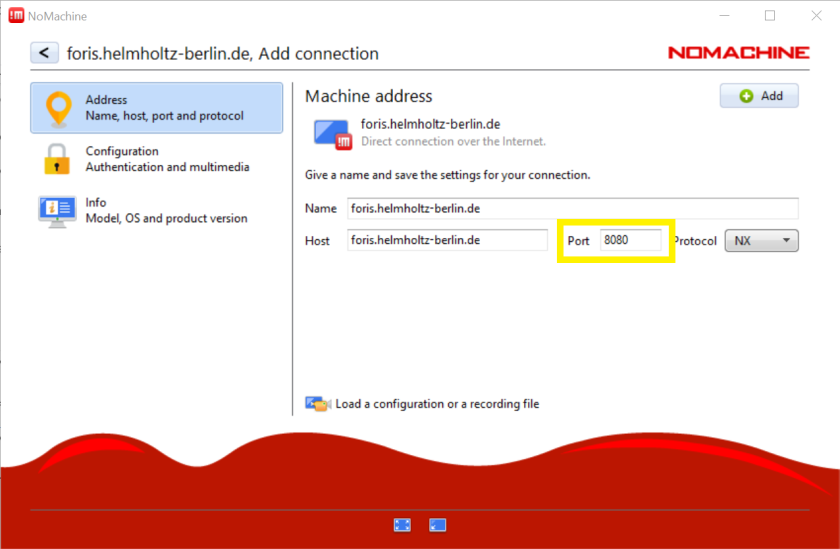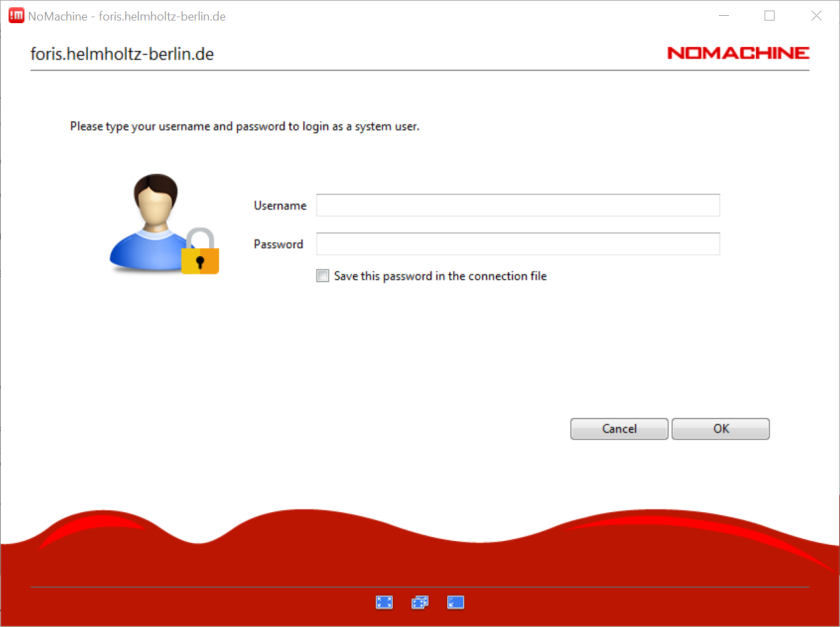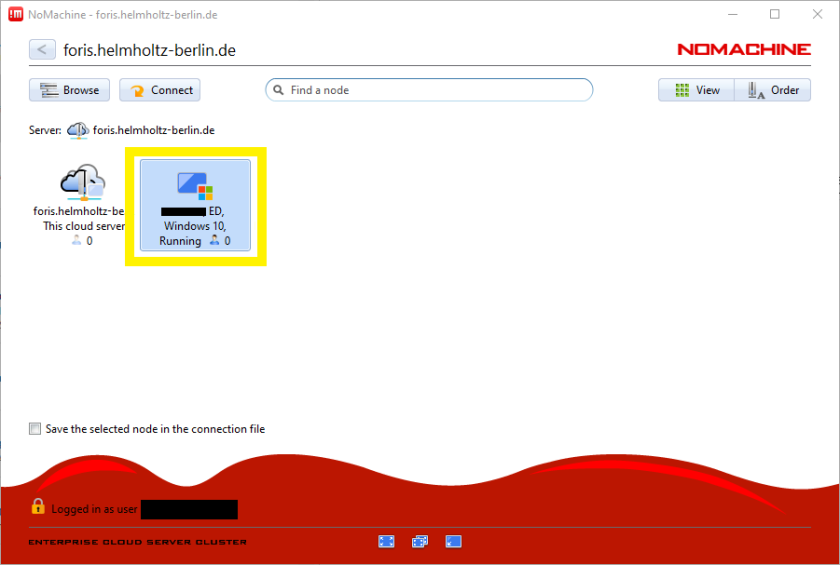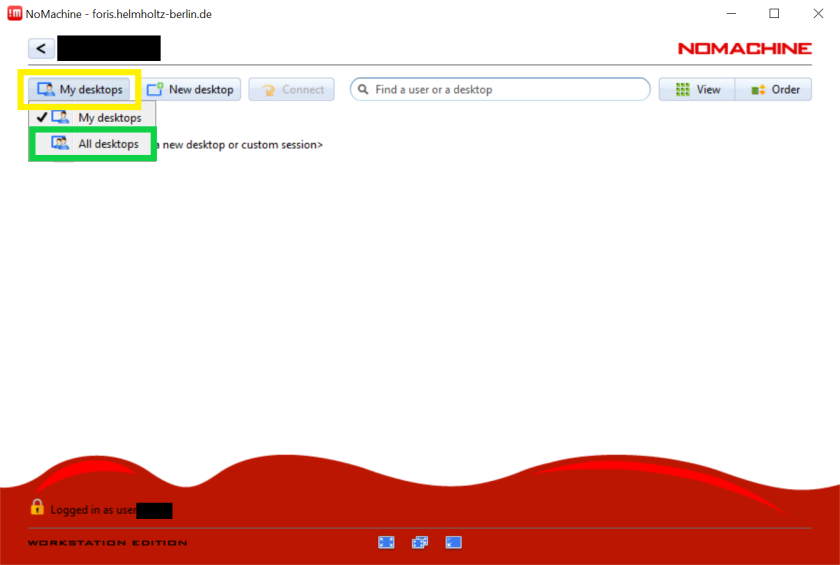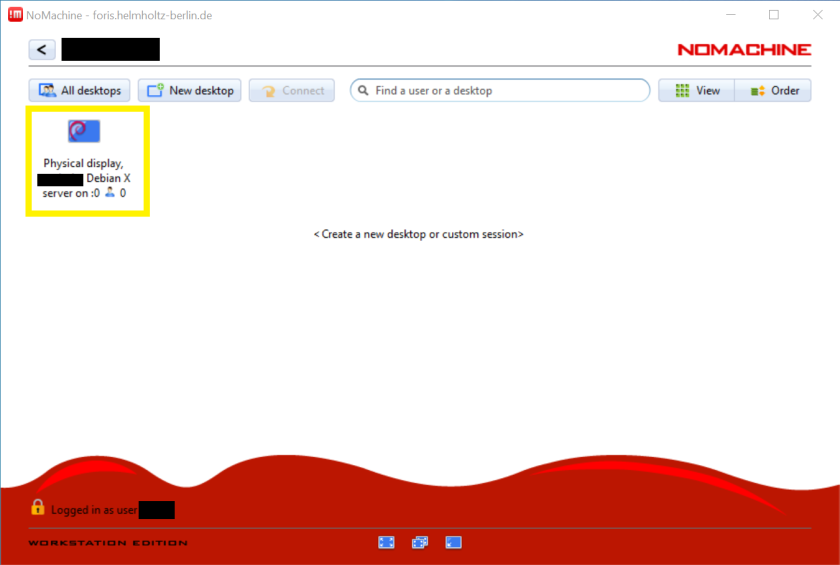Remote Access for Experiments (REX)
We offer remote access for selected experiments. Experiments can be performed remotely using the remote control software NoMachine. Instruments, devices and samples - if set up - can also be observed remotely using webcams.
However, this service is not limited to the scientific purpose for remote experiment control, but can also be set up for any PC with a completely different purpose.
NoMachine (foris.helmholtz-berlin.de)
What is NoMachine?
NoMachine is a remote desktop software that allows to access and control HZB PCs remotely (even outside the HZB). The concept is similar to TeamViewer. As a user you connect to the screen of the PC you want to control remotely ("Physical Desktop"). You see the screen content and can perform mouse and keyboard operations. Several parallel connections are possible, so that several people can see exactly the same screen content - including the person who is physically directly in front of the remotely controlled PC.
For remote control of Linux PCs, NoMachine goes one step further and, in addition to connections directly to the screen ("Phsyical Desktop"), enables the use of so-called "Virtual Desktops". With a virtual desktop connection, an independent session (desktop) is created for each user on the PC to be controlled remotely. Several parallel users can execute different tasks on the PC - without knowing about each other or seeing the other session. Even the person physically located directly in front of the remotely controlled PC does not see these sessions.
The Virtual Desktop offering can be further restricted administratively if desired, so that users do not receive a complete desktop session, but can, for example, only start a single freely selectable application (e.g. a measurement/analysis software) and also only see this ("Unix Application"), or can only start a shell console ("Unix Console").
If a user needs support for his virtual session, other persons authorized to access this PC (e.g. the HZB employee) can connect to the user's virtual session. A popup notification request is displayed in the virtual session and the user has to agree to the request. Then both parties can see the same virtual desktop at the same time.
Both Windows and Linux systems can be remotely controlled. Access to these systems is possible for Windows, Linux, macOS, smartphones and also platform-independent via a web browser (e.g. Firefox, Chrome).
The NoMachine server cluster foris.helmholtz-berlin.de is the central access point for all NoMachine connections to the HZB. How to access it as a user is described on this page in the section "User guide for connecting to a remote PC".
For HZB employees, there is important information on taking advantage of the NoMachine offer.
User guide for connecting to a remote PC
Step 1: Install NoMachine Enterprise Client (free of charge)
Select the appropriate platform and follow the steps for installing the NoMachine Enterprise Client on the PC that will be used to access an HZB PC to be controlled remotely.
Windows
- Download Installer: 64Bit (recommended) | 32Bit
- Execute and click through the setup.
Linux - Debian/Ubuntu based
- Download package: 64Bit (recommended) | 32Bit
- Execute and click through the setup. Alternatively from the command line: sudo apt install path/to/<filename>.deb
Linux - CentOS/RedHat based
- Download package: 64Bit (recommended) | 32Bit
- Execute and click through the setup. Alternatively from the command line: sudo rpm -ivh <fileName>.rpm
MacOS
- Download Installer
- Execute and click through the setup.
Step 2: Setting up the connection to HZB
1. Start the "NoMachine Enterprise Client" software you just installed.
2. Click Add in the upper left corner.
3. Add "foris.helmholtz-berlin.de" as shown and then click Add.
Make sure that outgoing traffic to TCP port 4000 is allowed in your network firewall. In private networks this is the case. In corporate networks this may have to be manually enabled by the network administrators. You will be able to determine this by following these instructions and seeing any error message that may appear.
4. Double-click the connection you have just set up.
Only in case of error: If no connection to foris.helmholtz-berlin.de can be established here, the outgoing TCP port 4000 is probably blocked in your network. In point 3, please use port 8080 instead of port 4000 as shown on the right.
5. HZB employees log in with their HZB account.
External users log in with the account received from HZB with prefix "rex_[...]".
6. You will be shown all the PCs to which you are authorized. Double-click the desired PC and you will be connected to the screen display and can control the PC remotely.
Physical Desktop or Virtual Desktop
If you are not connected directly to the PC, but see other options as shown here on the right, both Physical Desktop and Virtual Desktop connections are available. The distinction can be found at the top of this page in the section "What is NoMachine?".
The HZB person in charge/contact decides which connection types are available.
With "Create a new virtual desktop" you create your very own Virtual Desktop Session, to which no other person has access by default.
If you want to start a Physical Desktop Session to connect to the screen display for everyone, click on "<Connect to an existing desktop>" as framed in yellow on the right.
Click "My desktops" in the upper left corner and then click "All desktops".
You can now double-click on "Physical display" and you will be connected to the screen display.
You can switch back to the Virtual Desktop via the same path (top left button).
Step 3: How to use the NoMachine Panel
Below are the instructions for operating the NoMachine interface in the NoMachine Enterprise Client during an active connection:
- Windows: https://kb.nomachine.com/DT09T00267
- Linux: https://kb.nomachine.com/DT09T00266
- Mac: https://kb.nomachine.com/DT06S00218
Alternative in the web browser
If you are unable to install the NoMachine software due to a lack of administrator rights or if you are unable to enable TCP port 4000 and 8080 (or have them enabled), please use the web interface https://foris.helmholtz-berlin.de in the browser.
Then no installation or port unlocking is necessary. However, the connection via the NoMachine software is more performant and faster than the web interface.
If you have opened the web interface, follow the instructions from point 5.
Here you will find the instructions for operating the NoMachine interface in the browser during an active connection: https://kb.nomachine.com/DT07S00238
Webcams
Please check with the HZB Scientist if a webcam is set up for your experiment.
Access to the webcams is described below: Access to Experiment - Webcams

